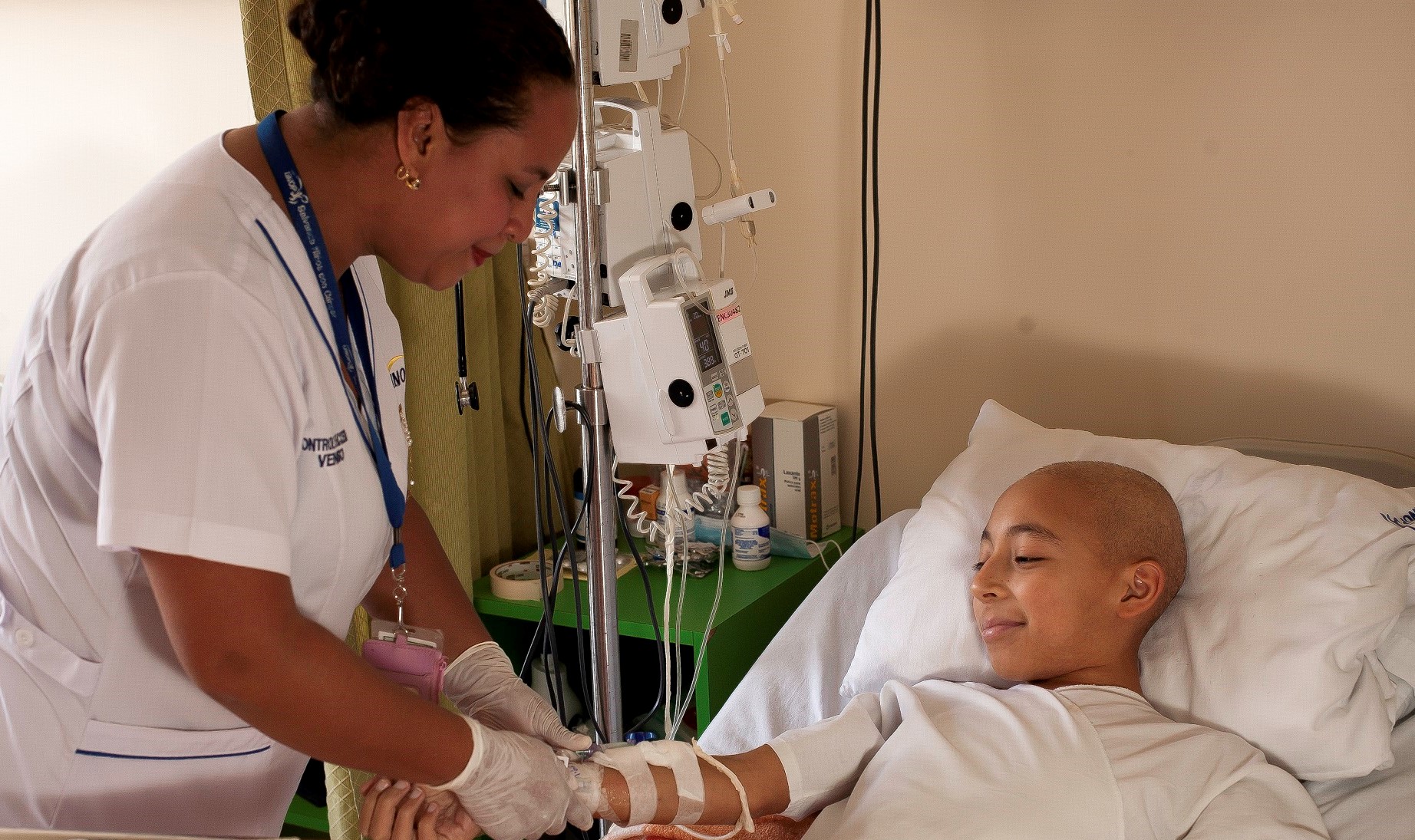When Dr Karina Quintero, a pediatrician associated with Panama’s Ministry of Health, first began working with the Paediatric Cancer Commission, she noted high mortality among children with cancer across the country. “In Panama, approximately, 90% of childhood cancer patients come with advanced-stage cancer—so the survival rate is very low,” she shares.
Low childhood cancer survival rates in Panama are mirrored across other low- and middle-income countries (LMICs) where more than 90% of children with cancer live. For a child living in a LMIC, the likelihood of surviving cancer is less than 30%. However, survival rates go up to over 80% for children living in high-income countries who can access optimal care.
A complex interplay of factors contributes to lower survival rates in LMICs. These include incorrect diagnosis, insufficient diagnostic capacity and delays in treatment and treatment abandonment. The WHO Global Initiative for Childhood Cancer established in 2018, with the support of St. Jude Children’s Research Hospital aims to address these factors and double childhood cancer survival rates to 60% globally, by 2030.

A child with cancer receives treatment from a nurse at the National Pediatric Oncology Unit in Guatemala. Photo: Rodrigo Gaitan, AYUVI, Unidad Nacional de Oncologia Pediatrica, Guatemala
Establishing cancer centres of excellence and care networks
When cancer services are accessible, most children with cancer can be cured. What is required is a series of small, strategic investments to improve health systems. Establishing national cancer centres of excellence is one such measure that is implemented through the Global Initiative. In the past two years over 12 countries participating in the Global Initiative have established cancer centres of excellence and made investments to increase the capacity of their health workforce to deliver quality services for children with cancer. These cancer centres connect the dots across levels of healthcare through a robust referral pathway and harness competencies of a well-trained and multi-disciplinary health workforce—enhancing health outcomes.
1. A robust referral pathway that connects the dots across levels of healthcare. Most children with cancer first seek attention at facilities close to their homes. Yet, across LMICs, the capacity of primary healthcare workers to diagnose early and make appropriate referrals for childhood cancer cases remains limited. A global survey revealed that only 20% of countries reported having early detection programmes or guidelines to strengthen early diagnosis of childhood cancer symptoms at the primary-care level. Moreover, only a third of countries globally have clearly defined referral systems from primary care to secondary and tertiary care, for suspected childhood cancer cases.
The Global Initiative ensures that services are coordinated at all levels—from community to specialized treatment centres—and that services are oriented towards providing care closer to home. Through the Initiative, Panama’s Ministry of Health (MoH) developed a guide to enable healthcare providers, particularly primary healthcare workers, to understand the signs and symptoms of childhood cancer and follow a streamlined referral process. Over 400 primary healthcare providers across the country received training on early detection and timely diagnosis of childhood cancers. As a result of Panama’s participation in the Global Initiative, Dr Karina Quintero has noticed that “more children with stage-I or stage-II cancer are coming in for treatment, and as a result of early diagnosis, survival rates have improved.”
Early detection programmes and guidelines to strengthen early diagnosis of childhood cancer symptoms have been established as regional priorities in the Americas and Africa.
2. A well-trained and multi-disciplinary health workforce that harnesses diverse competencies in cancer care. Caring for children with cancer requires several competencies, including nursing, nutritional support, psychosocial support, infection prevention and control, and supportive and palliative care. The Global Initiative promotes a model of care that builds competencies of health workers across diagnostic, treatment and essential supportive services for childhood cancer—ensuring comprehensive care.
Dr Krishna Paudel, who works in Nepal’s Ministry of Health describes how the country is building a multi-disciplinary workforce to improve health outcomes in childhood cancer care: “When we manage a child with cancer, a lot of people are involved, and they all need to be on the same page. Our existing nursing curriculum in Nepal does not cover all the core skills needed to provide care for a child with cancer. Under the Global Initiative for Childhood Cancer, our focus has been on training nurses who spend more time with the patient and family members. It is very important that they know the challenges involved in cancer treatment and are trained to support families through this difficult time.”
Since 2018, ten countries, including Nepal, have developed competency-based training curriculum to strengthen their childhood cancer heath workforce.
Small, strategic investments in cancer care can save lives
WHO’s technical assistance to governments to support them in building and sustaining high-quality childhood cancer programmes extends beyond establishing cancer centres of excellence and care networks. It also includes universal health coverage by integrating childhood cancer as part of the full range of essential services and within benefit packages; roadmaps for diagnosis and treatment; and evaluation and monitoring through robust information systems and research. By making these strategic investments in cancer care, we can save the lives of one million children over the next decade.
